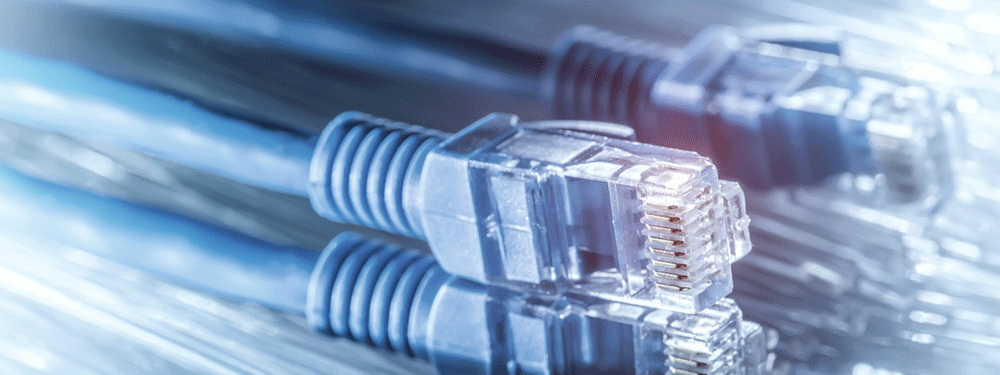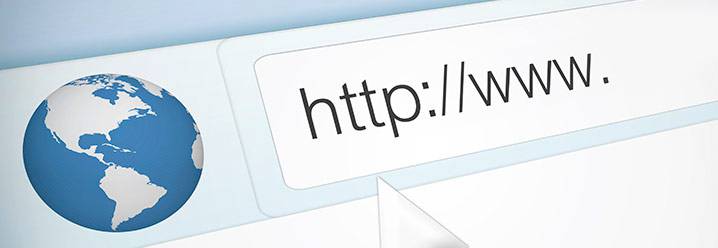Imagine what it would be like, if you suddenly find that you can’t transfer funds from a bank account, watch clips on YouTube, book flights, pay the electricity bill, search on Google, and thousands of other things that have become as crucial as breathing. The Internet has revolutionized every aspect of life such that it is hard to think of our life without it.
And, while we use the Internet every single day, yet it still remains a mystery for many. It’s time to unveil the most astonishing facts about this biggest innovation that everyone should be aware of.
Here We Have Come up with the Internet Basics you Need to Know!
- What is the Internet?
- History of the Internet
- Evolution of the Internet
- How does the Internet Work?
- Internet and WWW Are Two Different Things
- Types of the Internet
- Some Interesting Facts About The Internet
Let’s discuss these points in detail;
→ What is the Internet?
The Internet is a global network of billions of computers, electronic devices, and similar networks. The Internet is often referred to as a network of networks. With the Internet, it’s possible to access almost any information, communicate with anyone else in the world, and do much more.

→ History of the Internet
- The Internet’s origin is rooted in the USA in the 1950s when the Cold War was at its peak. Due to the growing tensions between North America and the Soviet Union and the fear of deadly nuclear weapon attacks, the US realized the need for a communication system that won’t be affected by the nuclear attack. — “Source“
- When networking technology was first developed, several scientists and engineers brought their research work to create ARPANET (Advanced Research Projects Agency Network).
- In 1965, Lawrence Roberts created two computers at different places ‘talk’ to each other. This experimental link used a telephone line with an acoustically coupled modem and transferred digital data using packets.– “Source“
- As ARPANET grew, rules for handling data packets were needed. Two computer scientists, Vint Cerf and Bob Kahn invented TCP/IP in 1974 that allowed computers to speak the same language. After that, ARPANET grew to become an interconnected network of networks, called the Internet. — “Source“
→ The Evolution of Internet, 1985–95
The use of TCP, the invention of DNS, and the growing use of emails resulted in an explosion of activities on the Internet. The network grew from 2,000 hosts to 30,000 in 1986 and 1987. Though people were using the Internet for sending messages, advanced computing knowledge was still required.
Later, Berners Lee proposed a new way of structuring or linking information available on the network. This concept for a ‘web of information’ became the World Wide Web. In 1993, with the launch of the Mosaic browser, people realized how easy it was to create HTML web pages. As a result, the number of websites increased to 100,000 by 1996.

The Internet and the WWW (world wide web) became quite popular by 1995. At that time, Netscape Navigator was the most widely used browser with around 10 million users. “Source“
→ How Does the Internet Work?
As we know the internet is a global network of physical cables, which can include copper telephone wires, TV cables, and fiber optics. Even wireless connections like Wi-Fi, 3G and 4G rely on the physical cable networks to access the Internet.
The work process of the internet is as follows;
→ When a user visits a website, the computer sends a request over these wires to a server. A server is where websites are stored, and it works a lot like your computer’s hard drive.
→ Once the request arrives, the server retrieves the website and sends the correct data back to your computer.
What’s amazing is that this all happens in just a few seconds. — “Source“
→ Internet And Web Are Different Things
‘Internet and web are the same ‘is the most widespread misconception. But they aren’t. The Internet is a networking infrastructure that connects various devices.
On the other hand, the Web or World Wide Web is a way of extracting information through the Internet. Thus, we can say that the web is one of many things that run on the Internet, and the Internet is much bigger than the web.
→ Types Of Internet
The type of Internet service you choose will largely depend on which Internet service provider (ISP) serves your area, along with the types of service they offer.
Here are Some Common Types of Internet Services:
1. Dial-up Internet:
Dialup Internet service allows connectivity to the Internet through the standard telephone line. By configuring the telephone line to the modem and inserting the other end to a phone jack and configuring the computer to dial the specific numbers, you are able to access the Internet on your computer.
This is generally the slowest type of Internet connection, and you should probably avoid it unless it is the only service available in your area. Dial-up Internet uses your phone line, so unless you have multiple phone lines you will not be able to use your landline and the Internet at the same time.
2. DSL:
DSL stands for the Digital Subscriber Line in which users get high-speed bandwidth connection through a phone wall jack. It works within the Frequencies so that you can use the Internet while making all phone calls. It connects to the Internet via a phone line but does not require you to have a landline at home. DSL service uses a broadband connection, makes it much faster than dial-up.
3. Cable Internet:
Cable Internet uses the same coaxial cable network to provide your home with the internet. The Internet service sends signals through the coaxial cable to the modem. The modem then uses an Ethernet cable to connect it to your computer, which gives access to high-speed internet. It uses a broadband connection and can be faster than both dial-up and DSL services.
4. Satellite Internet:
A satellite connection uses a broadband connection, but it does not require cable or phone lines; it connects to the Internet through satellites orbiting the Earth. As a result, it can be used almost anywhere in the world, but the connection may be affected by weather patterns. Satellite connections are also usually slower than DSL or cable.
5. 3G and 4G Internet:
3G and 4G service are mostly used with mobile phones, and it connects wirelessly through your ISP’s network. However, these types of connections aren’t always as fast as DSL or cable. They will also limit the amount of data you can use each month, which isn’t the case with most broadband plans.
Related Read: Dedicated vs. Shared Internet Connection
→ Some Interesting Facts About The Internet
Now that you have an idea of Internet history let’s talk about some fun facts about the Internet.
1. Internet Is A Bunch Of Cables
The Internet doesn’t mean bits of data that float in the ether. Instead, internet providers had to lay thousands of hair-thin cables that run across continents into workspaces or homes.
2. Sending Emails Is The Most Popular Thing To Do Online
Statista says that 90.8% of Americans use the Internet to send or receive emails. The first email was sent in the 1960s using ARPANET.
3. Google Is The Most Visited Site On The Internet
According to Alexa, Google is the king of websites on the Internet with the highest traffic ranking, followed by YouTube.com.
4. The Internet Was Conceived More Than 100 Years Ago
With scientists and engineers plotting the information flow through technology, the idea of the Internet could be traced back to the 1900s. It was in the 60s that J.C.R. Licklider thought of ‘Intergalactic Network’ and ARPANET was created.
5. Facebook Wasn’t The First Social Network
Contrary to what most people think, Facebook isn’t the first social network. SixDegrees.com, created in 1997, was the first social network where users could upload photos. However, it lasted until 1999.
6. Internet and the World Wide Web is not the same
People often get confused with the terms that both Internet and World Wide Web are the same. However, that’s not true! The Internet is the collection of various systems and protocols, while the World Wide Web is one of those protocols. WWW, allow resources to get linked with great ease in a seamless manner.
Let’s discuss the few components of WWW:
- TCP/IP protocol: To communicate on the Internet, there are some sets of rules and protocols that need to be followed to exchange messages.
- Domain name system: An internet access has four different fields, which are separated by four dots and periods. This is called an IP address and to translate this address into words, a Domain name system was developed.
- URL: URL is the address for websites and often begins with HTTP followed by two colons or slashes.
These are some of the basics and a handful of facts related to the Internet. Hopefully, this information will help answer some of the basic questions you might have about the Internet. So, which type of internet do you need- is it residential or business internet? Didn’t know the answer? Here’s our Residential Vs Business internet blog to help you get a clear picture.

